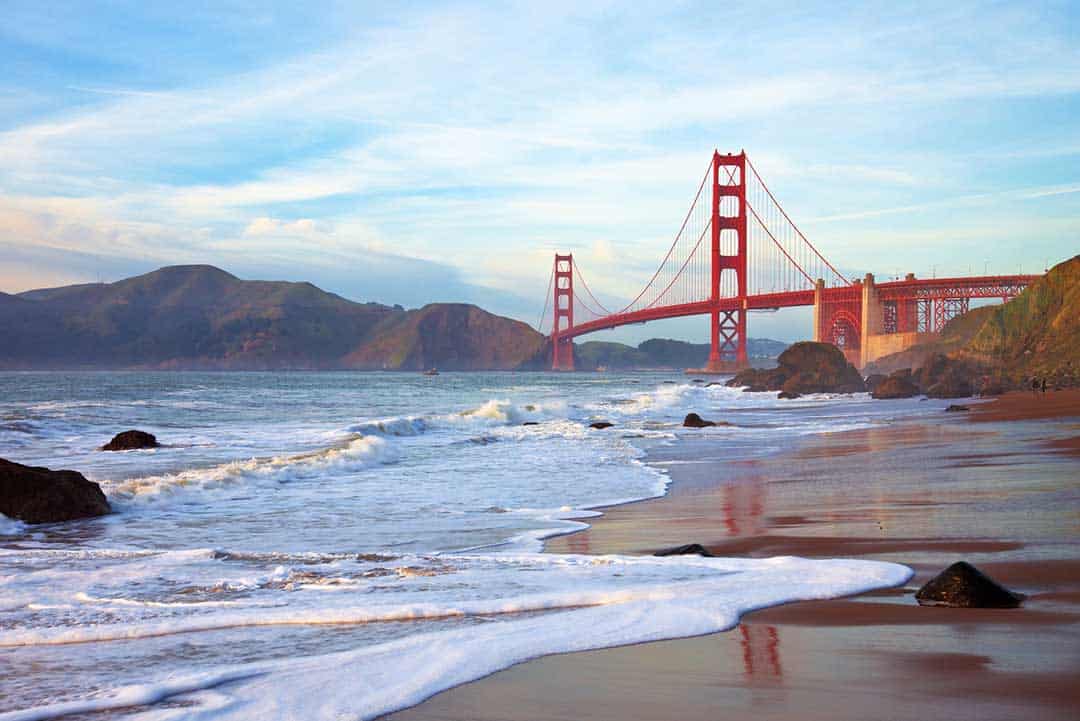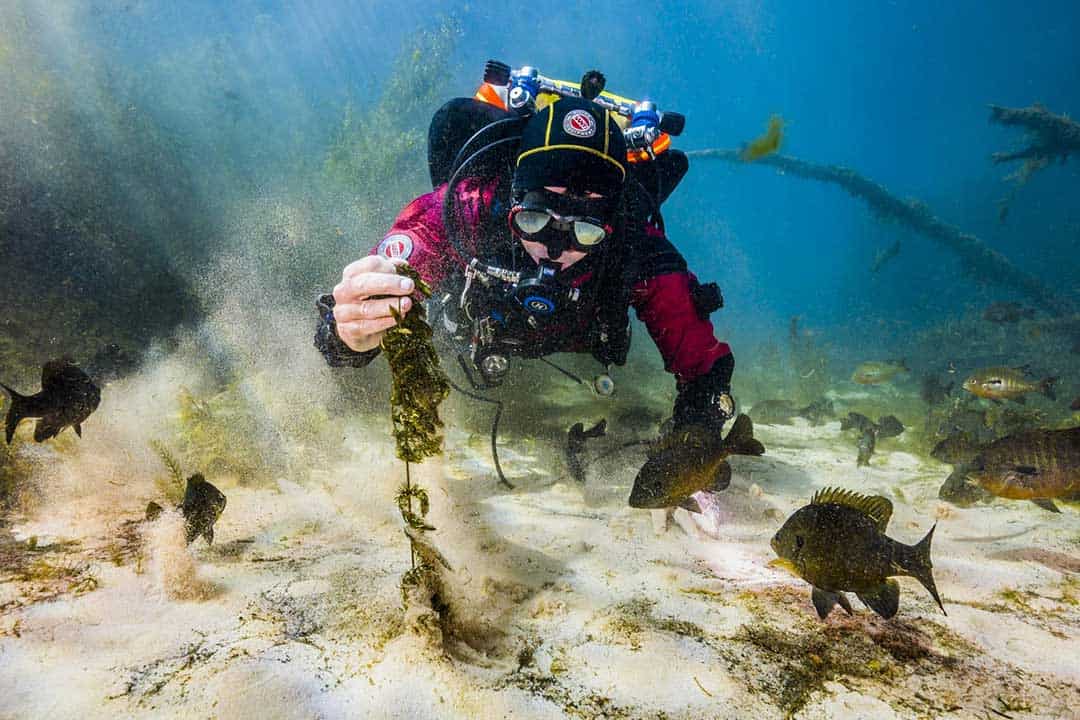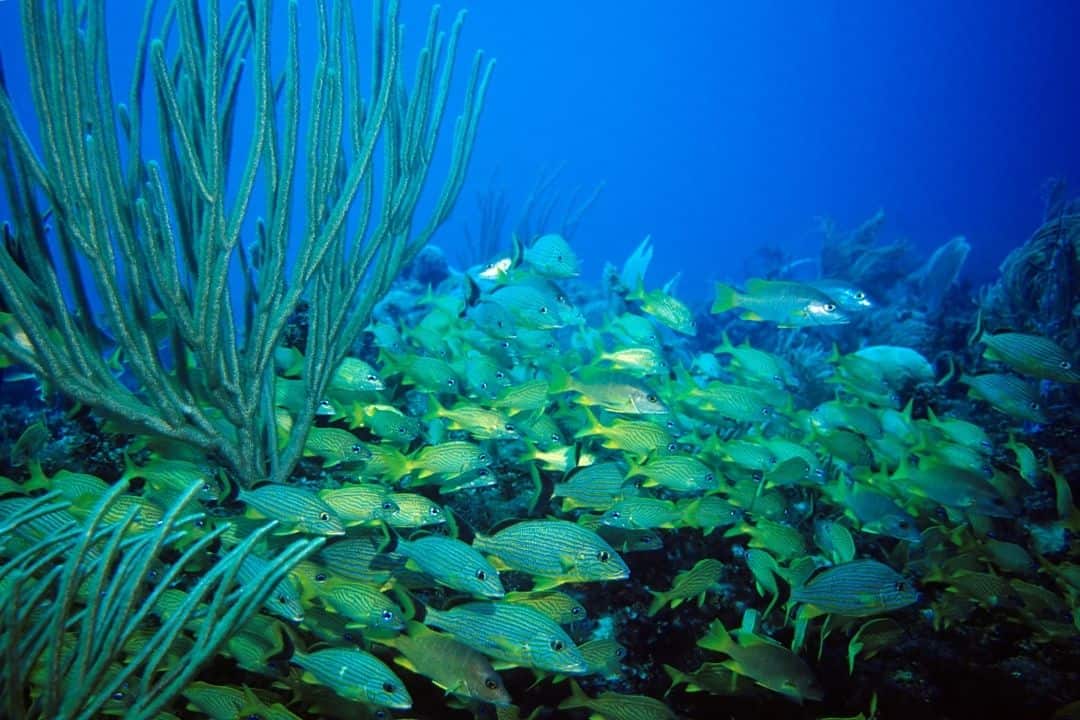Looking for a great dive destination that is not overcrowded and still affordable? Have you considered Malaysia for your next dive vacation?
While it is still as not as well known as other diving destinations within the famous “Coral Triangle”, Malaysian dive sites are found on list of the worlds best dive sites.
Malaysia has done much to protect its marine resources and has developed a responsible tourism industry that has outstanding scuba diving.
The diving in Malaysia is impressive with great biodiversity and perfect diving conditions.
Malaysia has some the best dive sites in the world.
This destination guide to the best diving in Malaysia will shed some light on this outstanding dive destination.
This guide highlights great diving on the Malay Peninsula and the island of Borneo.
Malaysia has two main areas. Peninsular Malaysia is where most of the development and population is located,
This is the Malay peninsula, which is shared with southern Thailand and Singapore.
The other portion is on the island of Borneo. The best dive destinations are on Borneo, so I will start there.
Malaysian Borneo – Sabah And Sarawak
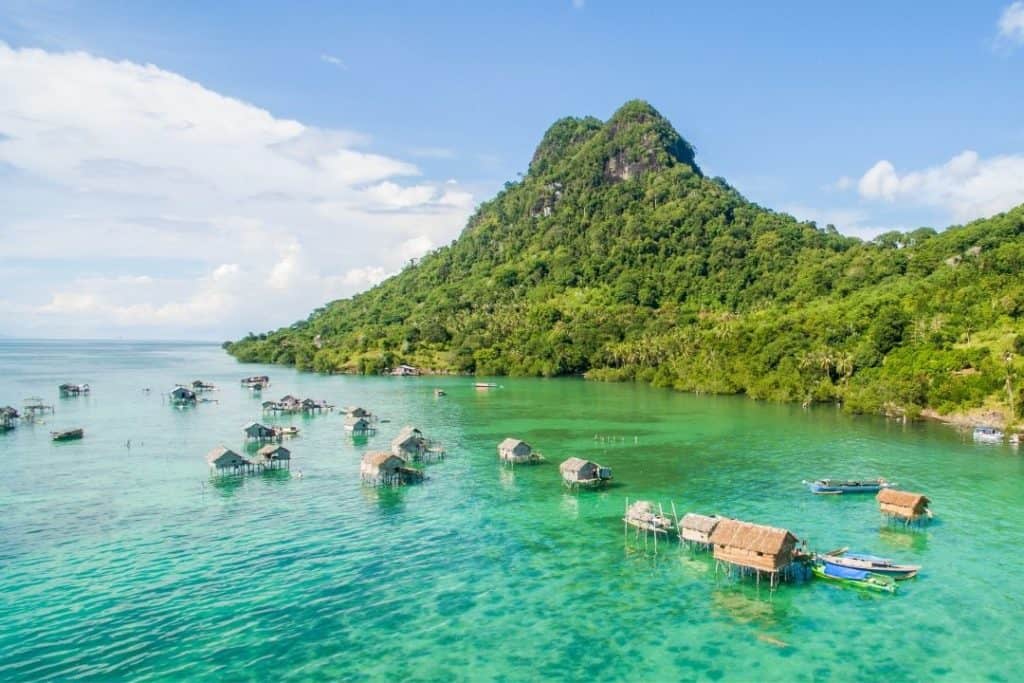
The island of Borneo is the third largest island in the world and separated from the Maya peninsula by the South China Sea.
The island is shared by Indonesia, the small country of Brunei and two Malaysian states, Sabah and Sarawak.
Often overlooked is the Federal Territory of Labuan which used to be a part of Brunei. These seven islands are just off the coast of Brunei and Sabah.
Much of Borneo island is undeveloped with a vast rainforest.
Once you leave the coastline there is only a few widely scattered small towns and few roads.
The untouched nature of the island extends to the waters. Borneo has seen little impact by man offering clear waters and pristine conditions.
The best diving in Malaysia is in Sabah with some dive sites/destinations found on list of the best diving in the world.
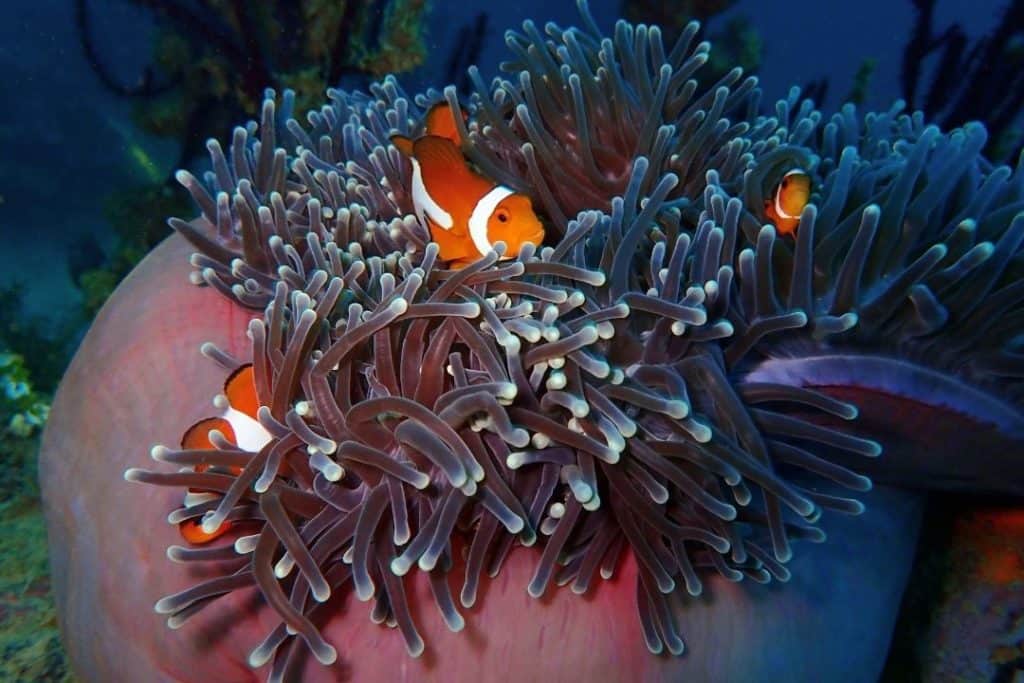
Sarawak is a little less known, however, it also offers the traveling diver some outstanding experiences.
Tourism has not been well-developed in Labuan yet and it has not hit the international diving scene. There are a number of nice wrecks here and outstanding reefs.
Sipadan, Mabul, Mataking or Kapalai
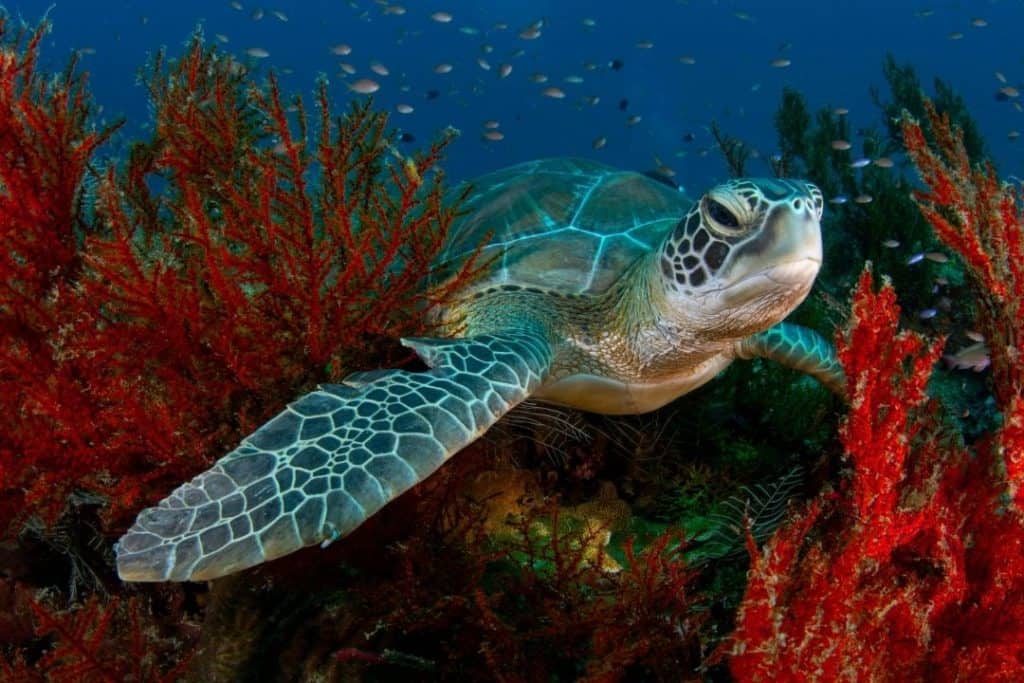
Sipadan Island is at the top of most list of the best diving in Malaysia, and just as often at the top of list of the best diving in the world.
The 30 acres (12 hectares) island, that Robinson Crusoe would love, rises over 2000 feet (ca. 610 meters) from the Celebes Sea floor.
There are outstanding coral garden that give way to wondrous walls.
Scientist have logged over 3000 species of fish around the island. Here you can thrill yourself swimming with hundreds of big-eye trevallies, and thousands silver jack fishes.
Green and hawkbill turtles use the beaches as nesting sites and you will see a number of them on each dive. Here are a few of the 15 dive sites around the island.
Barracuda Point

The Barracuda point dive site and its Tornado Barracudas is one of the most talked about experiences.
You enter the dive site, dropping to about 70 feet (ca. 21 meters) and allow the current to drift you to the point.
Here a shoal of thousands of resident barracuda swim together in a circle creating a tornado like vortex.
Finishing your dive, you will ascend to the Coral Garden dive site.
The Jetty
The Jetty is said to be one of the best beach dives in the world. A white sand beach leading to a mostly shallow reef starting at 10 feet (ca. 3 meters) then out to a deep wall.
Shallow reefs are great for photography thanks to the light, and learning more about marine biology.
Turtle Cavern/ Turtle Tomb
This dive site is at around 60 feet (ca. 18 meters) along a wall near the jetty. Turtle Cavern/Cave has a large tunnel leading to a large chamber.
Off this chamber is a small cave system. Turtle Tomb is a cave dive leading from the cavern.
The name of the site comes from the skeleton remains of turtles found here. Turtles who were unable to return to the surface and drowned.
The Drop Off

The Drop Off site is great for sighting many pelagic including white tail and black tail reef sharks, leopard sharks, scalloped hammerhead sharks, manta and eagle rays as well as tuna and whale sharks occasionally.
Diving Sipadan also means diving mMabul island, Makaking, Kapalai or Semporna.
Sipadan Island has been closed to development since 2005, when the Malaysian government closed the resorts on the island in an effort to environmentally protect the island.
They also removed those resorts. Mabul, Makaking, and Kapalai are small islands about 20 minutes away from Sipadan, and offer great diving and dive resorts.
Semporna is on the main island of Borneo about 45minutes away.
Sipadan Permits
Another factor to consider when selecting your dive resort is that you have to get a permit to dive Sipadan.
There are only 179 permits a day and 20 of those are reserved for snorkeling. The permits are good for 1 day and up to 3 dives.
The five largest dive resorts are each allocated 12 permits a day.
The remainder are randomly allocated to all the dive operations who apply. The major dive resorts will guarantee you one day of diving Sipadan during your stay.
The length of the stay required varies by resort and ranges from 4 nights to 7 nights.
Given the limited number of divers allowed each day, the majority of your dives will be closer to your dive resorts.
There are dozens of dive sites around the two other islands.
A number of the dive centers offer shore dives in addition to boat dives. Here are a few other dive sites away from Sipadan:
- Lobster Wall dive site starts at a reef around 60 feet (ca. 18 meters) to 85 feet (ca. 26 meters) before dropping to a wall down beyond recreational dive limits. The reef top is great for Open Water Divers and has a wide variety of marine and coral life. The dive site is nameed for the large number of lobsters found hiding in crevices in the wall.
- The Sea Adventure Dive Rig is a repurposed oil rig that has become a dive resort. It has excellent “rig” dives in 30 feet (ca. 9 meters) to 60 feet (ca. 18 meters) of water, with great muck diving as well as reefs. The dive sites are also visited by other dive resorts.
- Ray Point is a shallow dive site from 16 feet (ca. 5 meters) to 45 feet (ca. 14 meters) known for having many bluespotted rays. Marine life is plentiful with healthy corals, gorgonians, lionfish, and groupers.
Semporna is the drop off point for diving this area. Tawau Airport is the only realistic way to get to the region.
The transfer time from the airport to Semporna is about an hour and a half. From Semporna it is about 45 minutes by boat to Mabul.
Kota Kinabalu
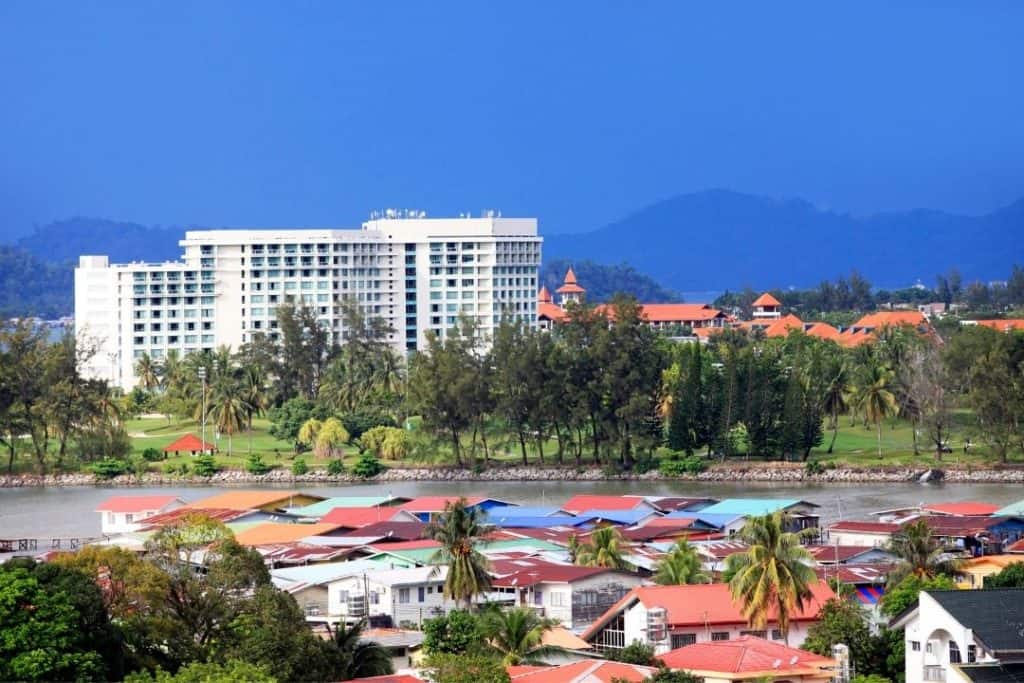
To be honest, Kota Kinabalu (KK) seldom makes lists of the top ten diving locations in Malaysia.
Which I find unfortunate as it is one of my favorite destinations in Malaysia.
It offers good diving, outdoor adventures, great food and a slow comfortable lifestyle. Kota Kinabalu is a small city that has the nickname of the “Outdoor City”.
It is easy to get around and is the gateway to Mount Kinabalu.
Mount Kinabalu is the highest mountain between the Himalayas and New Guinea, the site of a national park and a UNESCO Heritage site. If you want to mix your diving with other activities, KK is a great choice.
The Tunku Abdul Rahman Marine Park (TAR Marine Park) covers a little over 19 square miles (ca 49 square kilometers), and contains 5 small islands.
The closest is just a 15 minutes boat ride from KK city’s Jesselton Point jetty terminal.
The islands have nice sand beaches and fringing reefs. One island is undeveloped and the other four are lightly developed with a few resorts and hiking trails.
The Tunku Abdul Rahman Marine Park is a popular destination for beach lovers and snorkelers.

TAR has 15 very nice dive sites.
The dive sites are suitable for Open Water Divers as they are generally coral gardens or slopes between 10 feet (ca. 3 meters) and 80 feet (ca. 24 meters) deep.
This is a perfect destination to learn how to scuba dive.
Miri
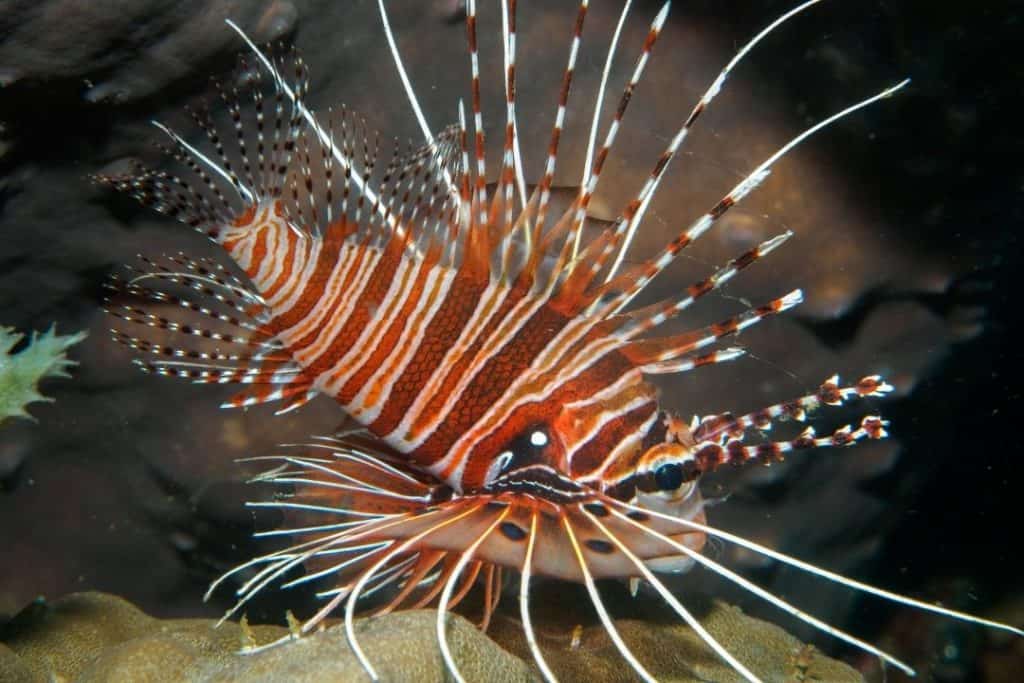
Miri is a location that does not always get the recognition it deserves.
Miri is in the eastern portion of the state of Sarawak. Just a few minutes off shore of the city is the Miri-Sibuti Coral Reefs National Park.
The park comprises 30 coral reefs ranging from 20 feet (ca. 6 meters) to 90 feet (ca. 27 meters) deep.
There are 40 dive sites in the park including some wall dives and wrecks.
The area between the reefs drops as deep as 165 feet (ca. 50 meters). You can dive Miri year round with at most a 3 mm wetsuit.
The best diving is from late March through November each year when visibility is over 100 feet (ca. 30 meters).
Miri is less than 2 hours by road from Bruine, allowing for easy day trips to Bruine and Labaun.
Labaun and Brunei

The seven islands of the Federal Territory of Labuan are in Brunei Bay and are just off the coast of Sabah and the small country of Brunei.
Labuan is the offshore finance center for Malaysia. It has only recently started building on the island group’s natural beauty to increase tourism as well.
There is a small marine park with outstanding reefs. Brunei Bay has a number of wrecks.
There is frequent ferry service between the islands and the islands and Brunei. There is also ferry service to Kota Kinabaul.
Kuching
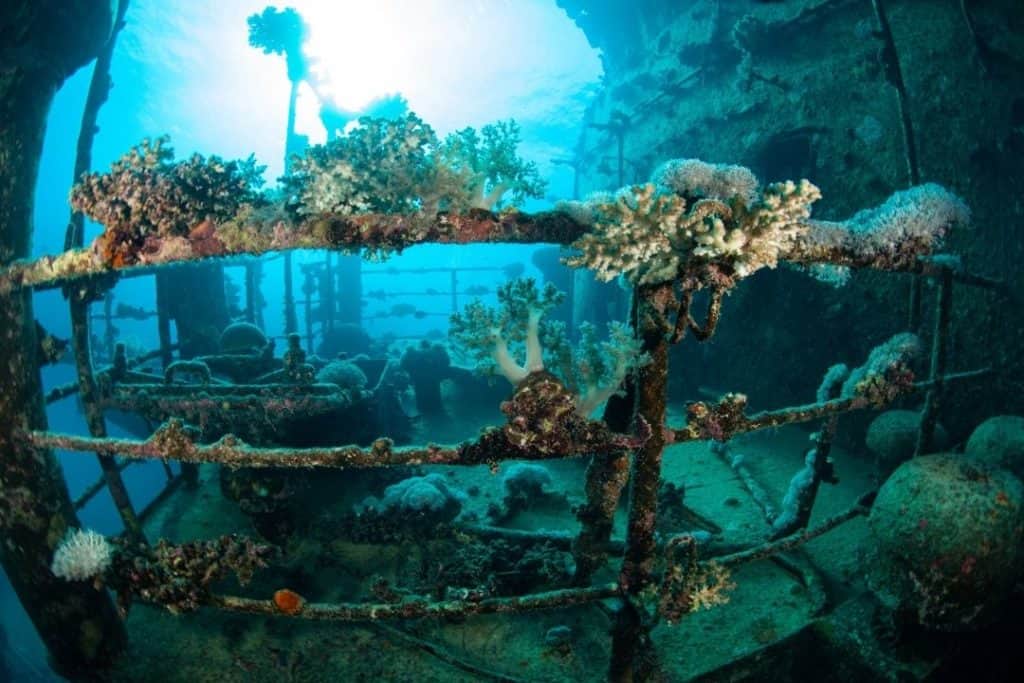
Kuching is the capital of the State of Sarawak and its largest city.
The city grew up around the mouth of the Sarawak river and is near the border with Indonesia.
Most of the diving around Kuching is offshore around three islands namely Satang Besar, Satang Kecil and Sempadi.
Satang Island is Sarawak’s first marine national park, and the most frequently visited set of dive sites. During WWII, the area was the site of a large concentration of Japanese troops and naval resources.
The tides of war lead to a number of Japaneses ships being destroyed in nearby waters.
Wreck divers often rate Kuching as the best wreck diving in Malaysia. Diving on these shipwreck enhances the beauty of the coral reefs of the region.
Cost of Diving and Staying Malaysian Borneo

Like anywhere, the cost of diving and accommodations have a wide range. While some high-end dive resorts can be expensive, there are many affordable choices.
Even the expensive places can be a bargain when compared to other destinations worldwide.
KK can be a good example.
There are a few resorts that will charge you 200 RM about 50 USD for a single tank boat dive. However, you will also find a number of dive operators offering a 3 tank dive with a BBQ lunch for 300 RM about 75 USD.
Luxury accommodations in Kota Kinabalu are still a good value.
The luxury hotel, Shangri-La Tanjung Aru, Kota Kinabalu, has seaview rooms starting at under 140 USD a night.
Mercure Kota Kinabalu City Centre and the Holiday Inn Express, both well known international chains are around 40 USD a night.
Local hotels such as Hotel Five 2 are lower, this hotel has rooms for 20 USD a night. Hostels get as low as 4 USD.
Diving in Sipadan is harder to price out.
Most of the dive resorts on the islands offer package deals that are difficult to compare. Staying in Semporna and connecting with a dive operator there is better for your budget but adds a longer boat ride each day.
Cooldive Semporna offers rooms for 20 USD and a 3 tank boat dive (excluding Sipadan) with lunch for about 85 USD.
Getting To Malaysian Borneo
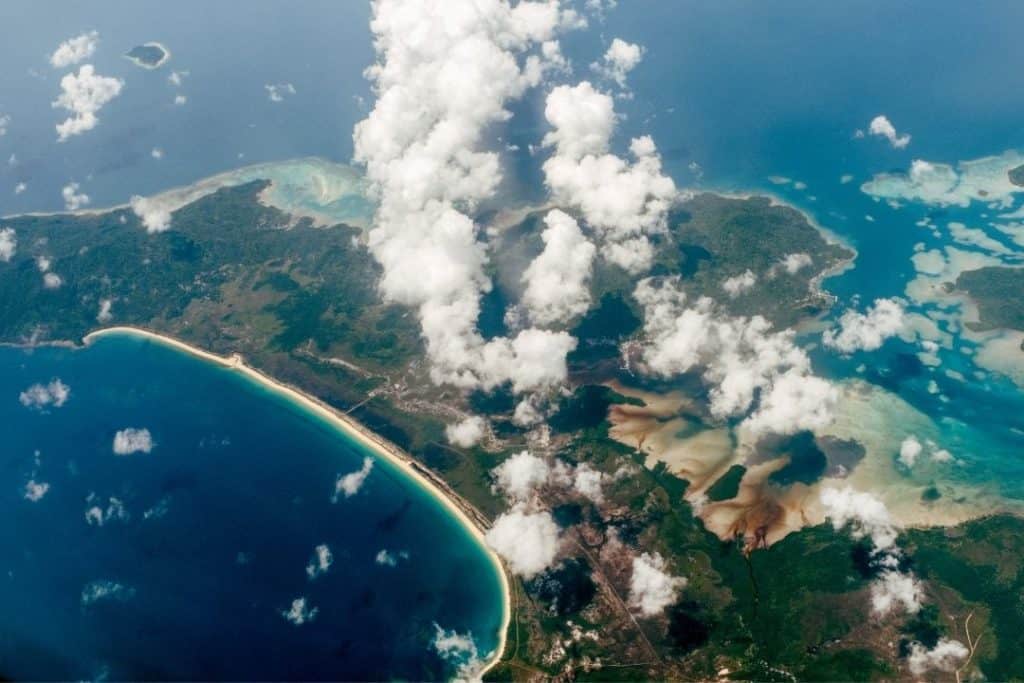
There are a few international airports you can use for your Malaysian Borneo dive vacation. Given the rough terrain and few roads, air travel to smaller airports from the major airports is also common.
Kota Kinabalu International Airport (airport code BKI)is the major airport in Sabah and Malaysia’s second busiest airport.
Tawau Airport (airport code TWU) is the second international airport in Sabah and the closest airport for diving Sipadan, Mabul, or Kapalai.
While technically an international airport, the international flights are to the Indonesian portions of Borneo.
To reach Tawau Airport you will need to fly through Kota Kinabalu International Airport or from KL International Airport (KLIA ) (airport code KUL) in Kuala Lumpur.
The state of Sarawak has two international airports.
Miri International Airport (airport code MYY) outside the city of Miri is in the eastern portion of the state near the border to Brunei.
It is Malaysia’s third busiest airport. The capital of Sarawak is Kuching and has the Kuching International Airport (airport code KCH).
This is located in the western edge of the state near the border of Indonesia. Land travel between the two Sarawak airports takes over 15 hours.
Brunei International Airport (airport code BWM) in Brunei is the closest airport to Labuan about 2 hours away mostly by ferry. It is also about 2 hours from the Miri airport.
Peninsular Malaysia
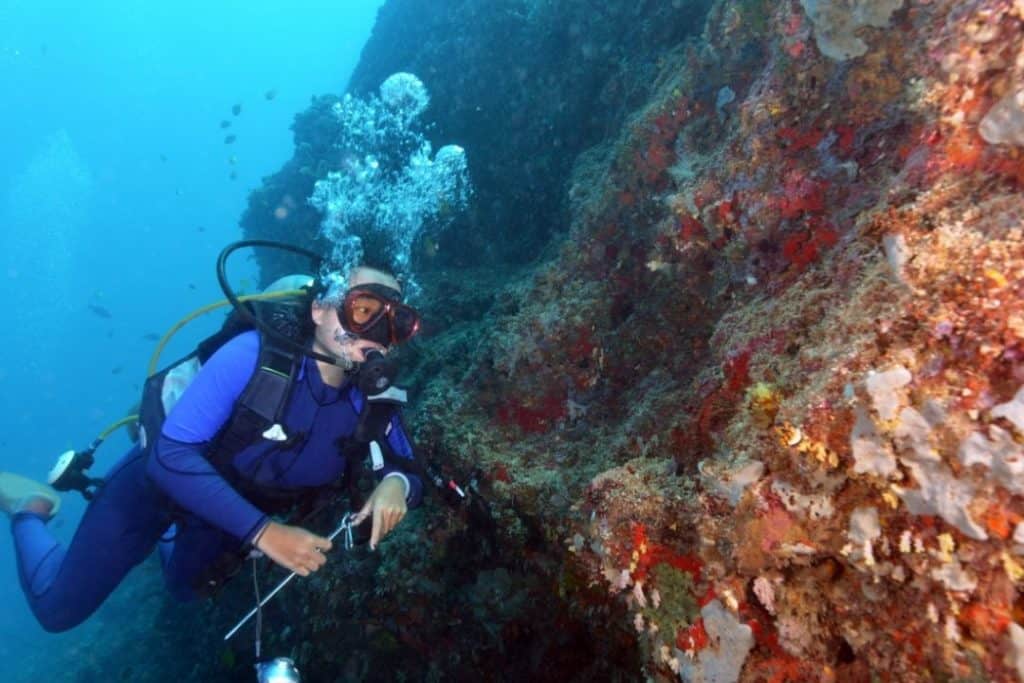
If you are like most divers, you really do not know much about diving Peninsular Malaysia. Divers have their attention drawn to top dive destinations such as those in Borneo or nearby Southern Thailand.
Most divers will recognize the name of Southern Thailand’s Phuket and Phi Phi Islands in the Andaman Sea, as well as, Koh Tao and Koh Samui in the Gulf of Thailand.
These are outstanding dive destinations and are a great place to learn how to dive.
Southern Thailand is located on the northern part of the Malay Peninsula, and the Thai islands mention are just off the coast.
So how is the diving off the rest of the peninsula between these two great area for diving?
The short answer is that diving Peninsular Malaysia is great. It is as good if not better than the famous Thailand destinations, and often without the crowded dive sites sometimes found in Thailand.
There is about ten dive destinations in Peninsular Malaysia offering nearly two hundred dive sites.
Dive destinations such as Perhentian Island and Redang Island off the east coast offer outstanding diving and are great places to learn how to dive.
Langkawi, the Jewel of Kedah, is an archipelago of 99 islands off the west coast in the Malacca Strait and Andaman Sea.
Much of the east coast diving is within the Terengganu Marine Park. The parks have 13 islands in its area.
The protected zone extends for 2 nautical miles from the low tide mark of each island.
The Perhentian Island group forms the northern edge and Tenggol Island forms the southern edge, a distance of over 100 miles (ca. 161 kilometers). Here are a few destinations within that park system.
Redang Island
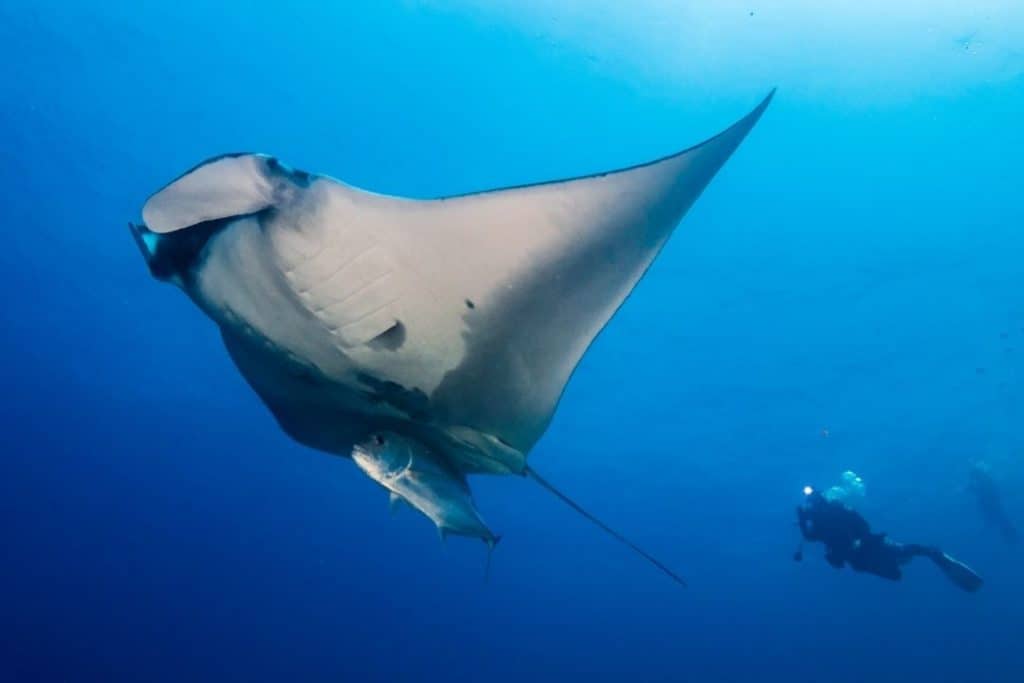
Redang Island is the top-rated dive destination of Peninsular Malaysia. In addition to the main island there are 8 adjacent islands.
The adjacent islands are Pulau Pinang, Pulau Ling, Pulau Ekor Tebu, Pulau Kerengga Besar, Pulau Kerengga Kecil, Pulau Paku Besar, Pulau Paku Kecil and Pulau Lima.
The waters around each of these islands have been declared the Palau Redang Marine Park.
Palau Pinang is just south of the main island and is the headquarters for the Terengganu Marine Parks.
There is a lot to say about diving here. I think the most enlightening fact is that 80% of all marine species found in the famous “Coral Triangle” are found in this park.
Not only is the biodiversity among the best in the world, the biomass is also outstanding. You will find both shore dives and boat dives.
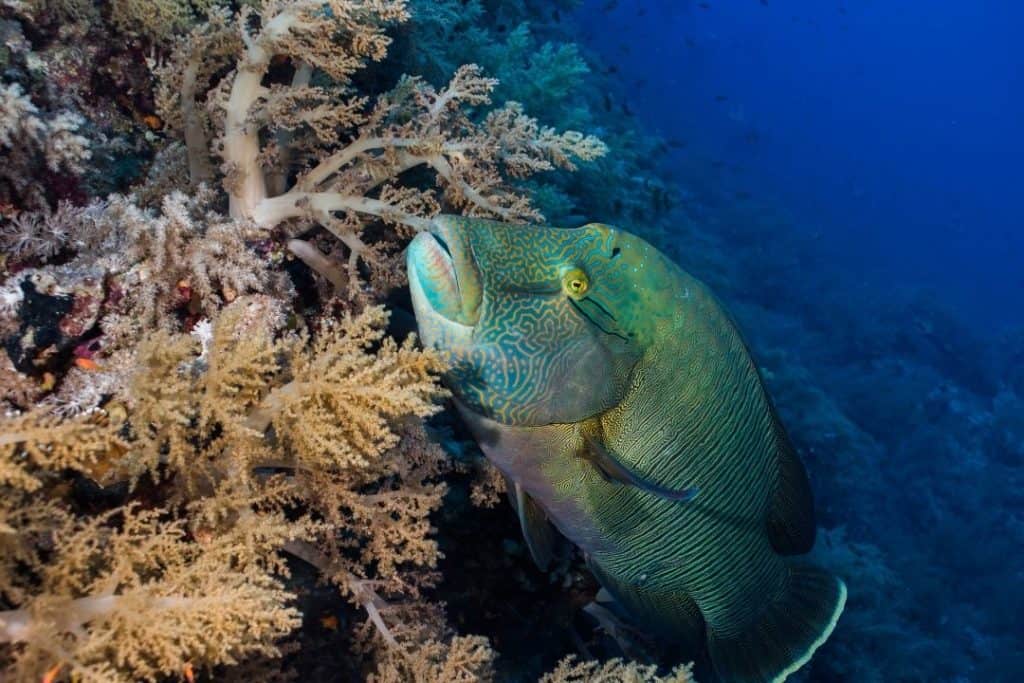
The boat dives are mostly short trips to the adjacent islands or other parts of Redang. The 25 dive sites around the island provide outstanding dives for all skill levels.
Here are a select few:
- Big Mount Pulau Lima. Located just a 100 meters off from Pulau Lima, Big Mount is a seamount noted for its coral, marine life, tropical reef fish and great diving conditions. The top of the seamount is just 60 feet (ca. 18 meters) below the surface and has an impressive coral garden teeming with life. The edge of the reef drops off down to about 100 feet (ca. 30 meters). The steep boulder full slope is covered in coral. The visibility is 100 feet (ca. 30 meters) or more both horizontal and vertical. Currents bring large pelagic species to this site. Be ready to see black tip sharks, manta rays and seasonally whales.
- Terumbu Kili Pulau Pinang. This dive site located just off Palau Pinng is for more advanced divers because of currents. This is a rock outcrop that breaches the surface and drops to about 60 feet (ca. 18 meters) to a sandy floor. Along the slope are some ledges with coral gardens of soft coral, leather corals, whips and sea fans. Jacks, snappers barracudas, and schools of yellowtail are found here,
- Tanjung Tokong (North Point) Pulau Redang. This dive site starts near the surface and has a steep soft and hard coral covered slope that goes do to 120 feet (ca. 37 meters). The corals are the home of many reef fish. You will also find resident big eyes jack, napoleon wrasse, queen fish and big grouper. This site is near the turtle bay research site and you will likely also see green and hawksbill turtles.
Perhentian Island

What is called Perhentian Island is really two islands, Pulau Perhentian Kecil and Pulau Perhentian Besar.
This area is a well known vacation destination for water lovers.
It offers wonderful beaches where snorkels can wonder at the underwater beauty.
There are also 25 dive sites. Most of these sites are calm and shallow making this an ideal destination in Malaysia to learn how to dive.
Cost of Diving and Staying Peninsular Malaysia
When you are looking at cost for a dive vacation in Peninsular Malaysia, you need to remember that you are on small offshore islands.
Also, these locations attract tourist other than divers.
Accommodation prices vary. Samudra Beach Chalet have rooms for 22 USD a night while the Bubu villas are over 300 USD a night.
An average price place to stay like Aina Garden Long Beach will run you around 40 USD.
Diving cost also varies with some dive operators offering boat dives as low as 15 USD a dive, if you have your own equipment and only need tank and weights.
Getting to Peninsular Malaysia
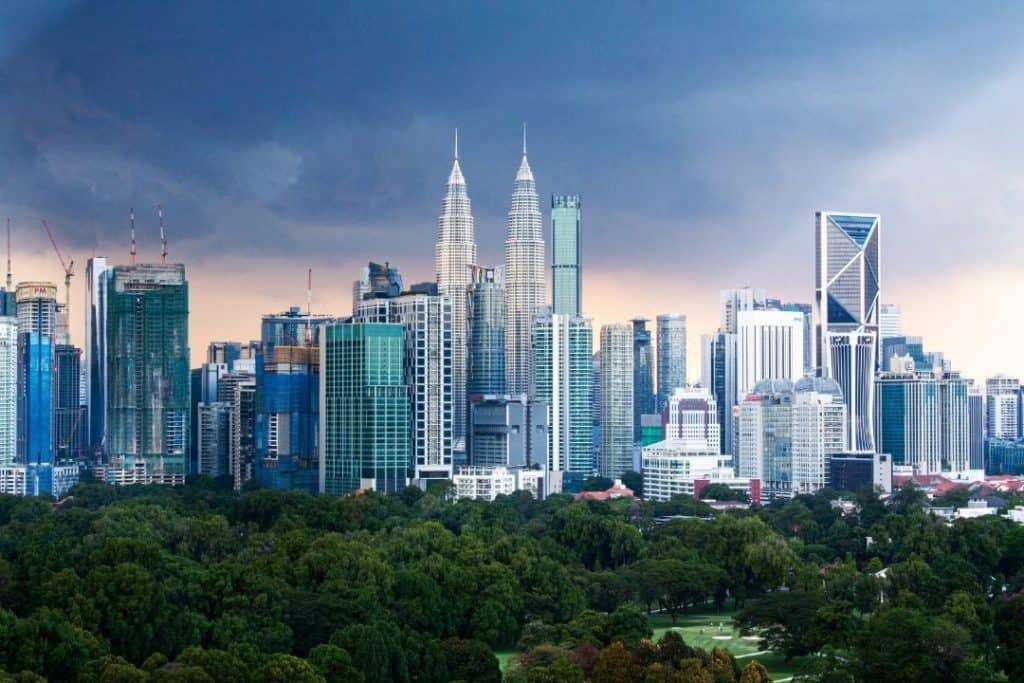
Most international travelers to Peninsular Malaysia arrive by the capital Kuala Lumpur often just referred to as KL.
While there are a few international airports in this part of the country, Kuala Lumpur International Airport (KLIA) is the overwhelming favorite.
KLIA airport (airport code KUL) ranks as one of the top ten busiest airports in the world servicing over 60 international airlines.
KLIA has two terminals, the main terminal destination as KLIA with a satellite terminal and a second terminal mostly for low-cost airlines KLIA2.
Similar to Honk Kong’s airport, there is a city terminal. The city terminal allows you to check-in for your flight and deposit your luggage before taking a trin to the airport.
If you are traveling to the southern portion of Malaysia, using the Singapore Changi Airport may be an option.
Changi Airport serves 80 international airlines. Bus and rail connection serve many parts of Malaysia from Singapore.
Once you are in country, you can use domestic air travel or use the efficient rail and bus services to get to your Malaysian dive destination.
Conclusion
I hope that this destination guide to scuba dive Malaysia has gotten you to start thinking about including Malaysia in your dive planning.
If you are just thinking of learning to dive or are traveling with non-divers, then Kota Kinabalu, Redang Island and Perhentian Island are great places for you.
Even an experienced diver will enjoy these locations.
Experienced divers may find Sipadan Island the place to go. Enjoy the experience and add to your bragging rights.
I know I have left out many outstanding dive destinations and dive sites like the tiger reef in tioman island.
There is just so much world class diving to do diving Malaysia.
If you would like to add your own experiences, please leave a comment!
